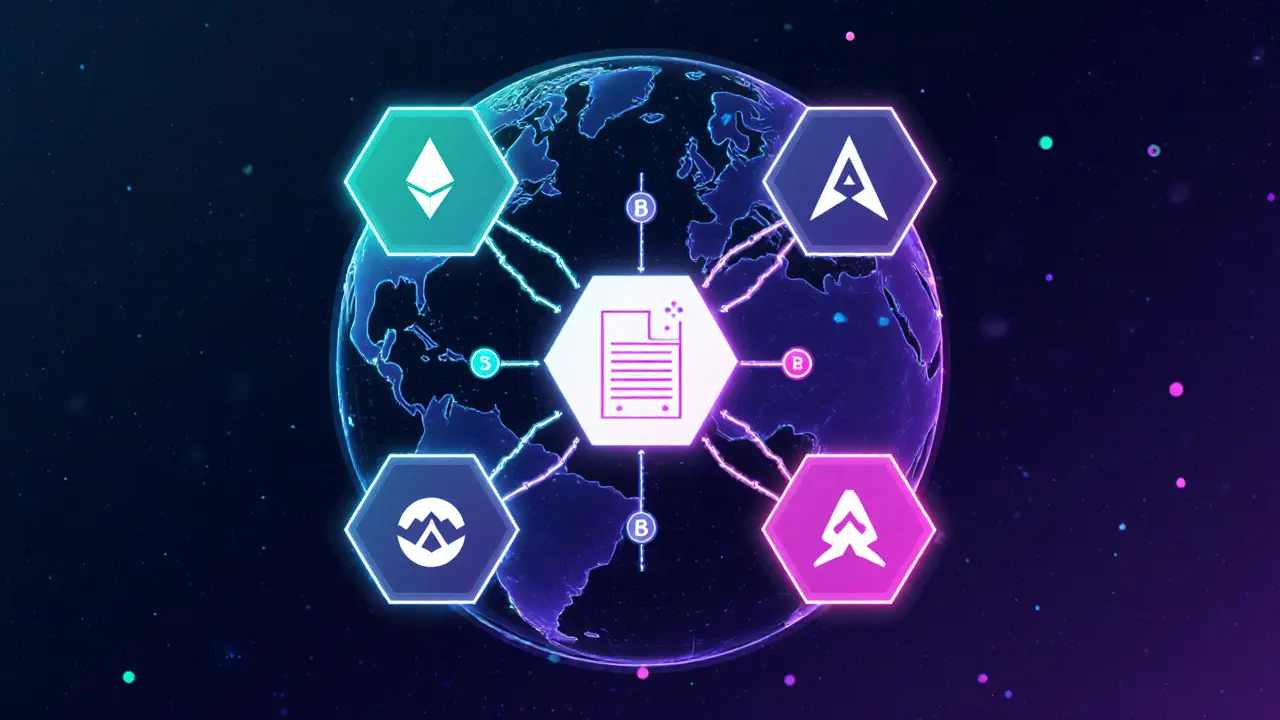LayerZero: The Backbone of Cross‑Chain Messaging
When working with LayerZero, a lightweight protocol that enables blockchains to send messages to each other instantly. Also known as LayerZero Labs, it lets cross‑chain bridges, systems that move assets between separate ledgers and omnichain dApps, decentralized applications that run on multiple chains at once communicate securely without trusting a single third party.
LayerZero enables cross‑chain messaging (Subject‑Predicate‑Object), and that ability fuels the whole ecosystem of bridges and multi‑chain apps. In practice, a bridge will call LayerZero to transmit a lock‑event from Chain A, and LayerZero will forward that proof to Chain B, where a corresponding unlock happens. The same message flow powers omnichain dApps: a user’s action on Ethereum can trigger an instant update on Solana, thanks to LayerZero’s relay‑oracle combo. This basic chain‑to‑chain handshake is what makes interoperability possible and drives liquidity across silos.
How LayerZero Works Under the Hood
The protocol relies on two lightweight components: an oracle that fetches block data from the source chain and a relayer that delivers the exact same data to the destination. Because the oracle and relayer are separate, no single entity can tamper with the message without being detected. Developers only need to plug the LayerZero SDK into their contracts; the heavy lifting of proof generation and verification is handled off‑chain. This design keeps gas costs low, which is why many new projects choose LayerZero over older, more cumbersome bridge solutions.
Another key attribute is ultra‑fast finality. Since LayerZero does not rely on a token‑based staking model for security, messages confirm as soon as the source block is final. That speed matters for traders who need price updates across markets, for gamers who want instant asset transfers, and for DeFi protocols that require real‑time collateral moves. In short, LayerZero’s architecture trims delay, cuts fees, and reduces the attack surface.
Because LayerZero is chain‑agnostic, it works with major ecosystems—Ethereum, BNB Chain, Avalanche, Solana, and even newer Layer‑2 solutions. This broad coverage is why the term "omnichain" has become a buzzword: developers can write a single smart contract that talks to many chains without rewriting code for each network. The result is a smoother user experience and a faster path to mass adoption.
Security remains a top concern. The protocol’s dual‑node model (oracle + relayer) means that an attacker would need to compromise both at the same time—a scenario that is far less likely than breaking a single bridge contract. Audits from leading firms have confirmed the soundness of the design, and the open‑source community continuously monitors the code for vulnerabilities.
From a business perspective, LayerZero opens new revenue streams. Projects can charge a small fee for the messaging service, or they can build value‑added features like aggregated price feeds that pull data from several chains at once. This creates a win‑win: users enjoy cheaper, faster transfers, while protocols monetize a core piece of infrastructure.
Looking ahead, the roadmap includes native support for privacy‑preserving rollups and deeper integration with decentralized identity solutions. Those upgrades will let users keep their data private while still moving assets across chains, expanding the use cases beyond finance into gaming, social, and identity‑driven apps.
All this means that when you see a new bridge launch or an omnichain NFT marketplace, LayerZero is likely the silent engine making it happen. Below you’ll find a curated collection of articles that break down the licensing landscape, explore tokenomics of emerging projects, and dive into specific exchange reviews—all tied together by the common thread of cross‑chain connectivity that LayerZero enables. Browse on to see how this protocol shapes the next wave of blockchain innovation.

Cross-Chain DeFi Applications: How Interoperable Finance Works
Jul 25, 2025, Posted by Ronan Caverly
Explore how cross-chain DeFi apps connect multiple blockchains, the tech behind bridges, benefits, security challenges, and future trends shaping interoperable finance in 2025.
MORESEARCH HERE
Categories
TAGS
- decentralized exchange
- crypto exchange review
- cryptocurrency
- crypto coin
- CoinMarketCap airdrop
- smart contracts
- tokenomics
- cryptocurrency exchange safety
- crypto exchange
- cryptocurrency airdrop
- crypto airdrop
- cryptocurrency exchange
- crypto airdrop guide
- blockchain token distribution
- DeFi
- crypto exchange scam
- crypto airdrop 2025
- Ethereum
- cross-chain interoperability
- ERC-20
